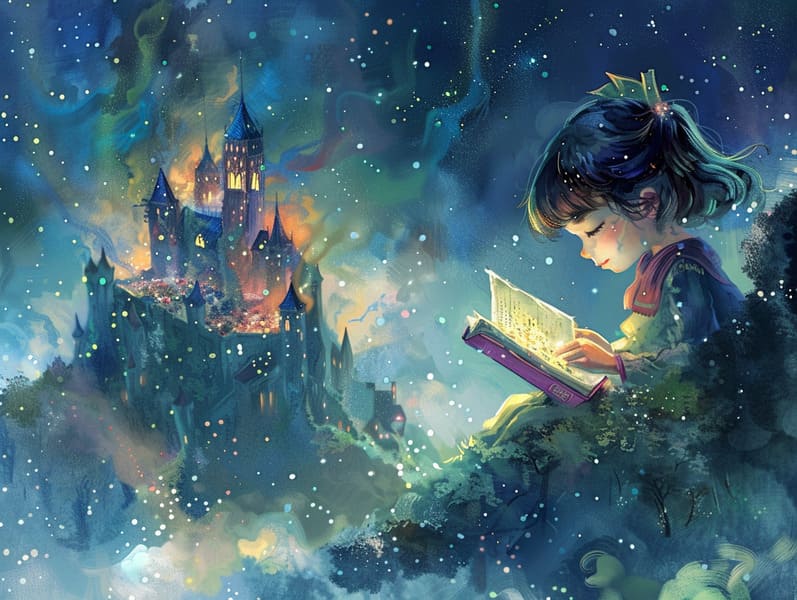The Origins of Timeless Fairy Tales with the Eternal Appeal.
The Origins of Timeless Fairy Tales with the Eternal Appeal.
Blog Article

Traditional fairy tales have legendary status. These narratives have been whispered from one generation to the next far before they were ever transcribed. They were born from a variety of societies, including Western traditions. They were initially narrated among grown-ups, often carrying themes and messages aligned with the societal norms and beliefs of the time.
The Grimm brothers, Jacob and Wilhelm (the Grimm brothers), were among the first to compile many of these beloved tales. Their compilation, "Grimm's Story Collection," included classics like "The Little Glass Slipper," "Hansel and Grethel," and "The True Story of Snow White," which have since become cornerstones in the world of children's fairy tales. Similarly, H. C. Andersen's whimsical narratives, such as "The Story of the Little Mermaid," and "The Ugly Duckling," have gained the love worldwide, guaranteeing their place in the pantheon of iconic fairy tales.
Even though they are old, traditional fairy tales remain as important as ever, especially as children's bedtime stories. These magical stories are now available in many formats, including gorgeously illustrated books, charming animations, and digital fairy tales.
Their lasting appeal can be attributed to several fascinating points:
Key Lessons: Old fairy tales often impart important moral lessons. Narratives like "The Tale of the Boy Who Cried Wolf" teach the virtue of being truthful, while "The Hare and the Tortoise" underline the traits of resolve and modesty. These narratives offer children clear distinctions between correct and incorrect, shaping their moral compass in a mild yet profound way.
Empathy and Understanding: Traditional fairy tales frequently depict heroines facing tests and troubles, provoking young readers to feel with their struggles and boost their triumphs. For instance, "Beauty's Beast" reveals the importance of seeing inner beauty to understand the real character of a person, fostering sympathy and insight.
Cultural Appreciation: Many timeless fairy tales are steeped in the cultural contexts from which they originated. Discovering these tales can provide informative snapshots into different heritages, fostering a sense of world insight and understanding.
Inventiveness and Imagination: The enchanted elements in timeless fairy tales—enchanted forests—inspire children’s visions and dreams. These fairy tales move readers to supernatural realms, boosting creative dreams and a sense of enchantment that remains a lifetime.
Ancient fairy tales are not only delightful but also pedagogical. They function as fantastical tools in cultivating various thinking and feeling skills in little ones. When traditional fairy tales are spoken, they cultivate language skills by teaching new terms and intricate sentence structures. This practice also nurtures listening skills and focus, as the young pay close attention, expectant to see what happens next.
Furthermore, reflecting on the themes and characters of classic fairy tales can develop analytical skills and thinking skills. Children are shown to pinpoint patterns, expect results, and get cause and effect. These examinations also encourage little ones convey their thoughts and feelings, promoting their emotional intelligence.
In today’s technological age, the prevalence of digital fairy tales has made these stories more available than ever. Online resources and web apps offer wide arrays of old fairy tales that can be looked at or listened to anytime, anywhere. Fairy tales spoken are particularly sought after, sharing an captivating way for little ones to engage with these charming stories. Audiobooks and read-out-loud stories guide characters and settings to life, often supported by captivating background sounds and musical scores that raise the story adventure.
The timeless charm of traditional fairy tales lies in their ability to shift to current eras while click here keeping hold of their core values. Contemporary revisions of these stories often integrate more different figures and modern settings, making them familiar to today’s audience. However, the central morals of fearlessness, understanding, and integrity remain unchanged, continuing to affect audiences of all ages.
Timeless fairy tales also offer a sense of protection and predictability. They provide a systematic narrative with a straightforward beginning, middle, and end, often concluding with the conclusion of conflicts and the triumph of morality over wickedness. This reliability can be easing for young readers, making available a sense of steadfastness in an unpredictable world.
Classic fairy tales continue to enthrall and enlighten new generations, maintaining their delight and meaningfulness in modern society. As nighttime stories for kids, they give a perfect blend of delight and instruction, sustaining moral values, empathy, and creativity. The availability of online storybooks and the prevalence of fairy tales spoken validate that these classic tales remain accessible to new generations.
By upholding and spreading these narratives, we continue to extol the rich tapestry of fables and cultural heritage. Whether you are reading a colorful picture book, accessing a online collection, or playing an voice book, the beauty of Grimm's fairy tales is always within reach. These fairy tales convey of the unwavering presence of fairy tales and its ability to unite us across eras and regions.
Regardless if you are exploring a colorful picture book, seeing a internet library, or listening to an audio story, the elegance of traditional fairy tales is always within reach.
These stories convey of the endless effect of stories and its ability to unify us across centuries and lands, creating a bond that delights and instructs alike.